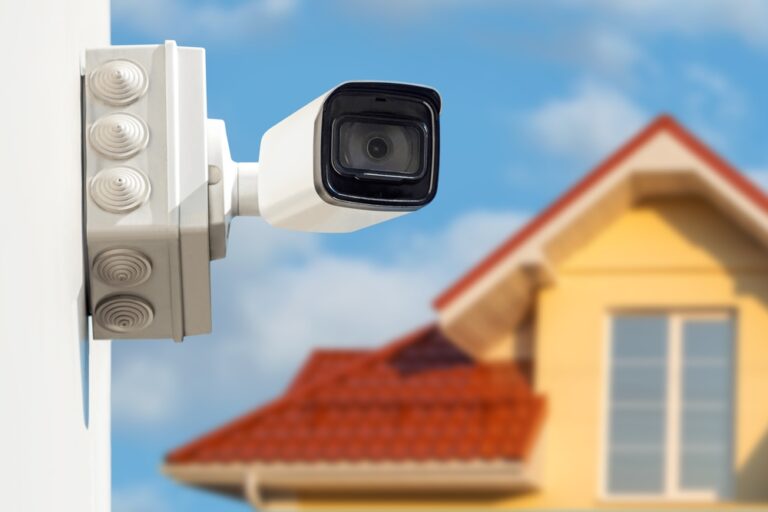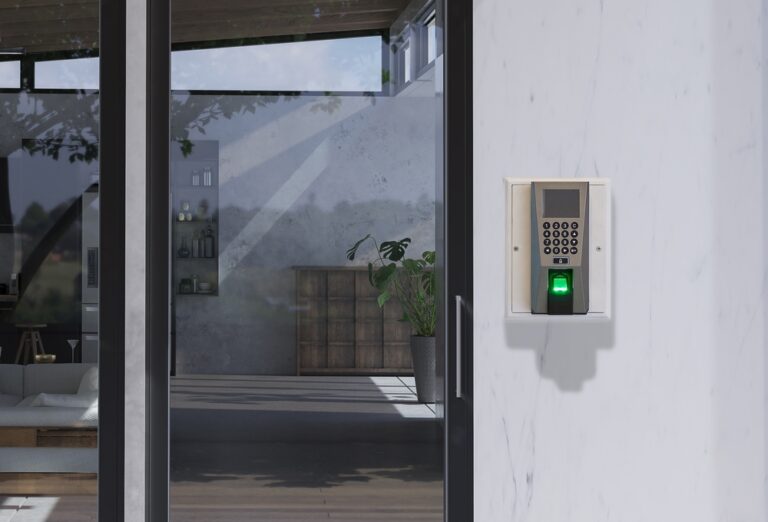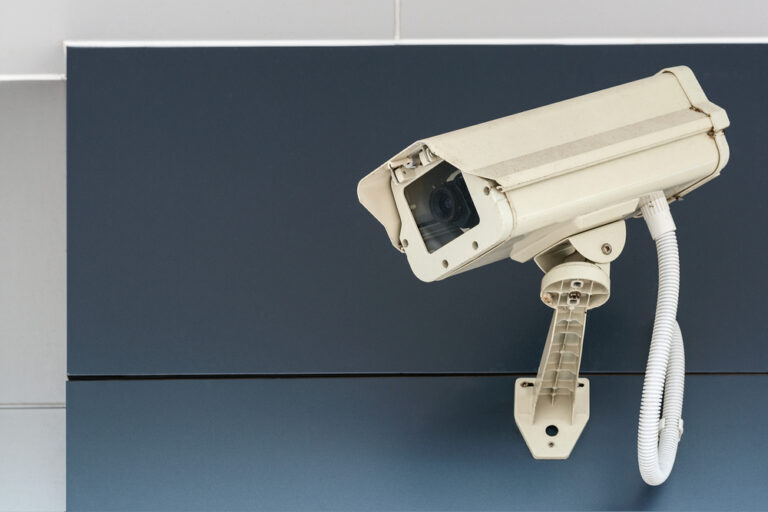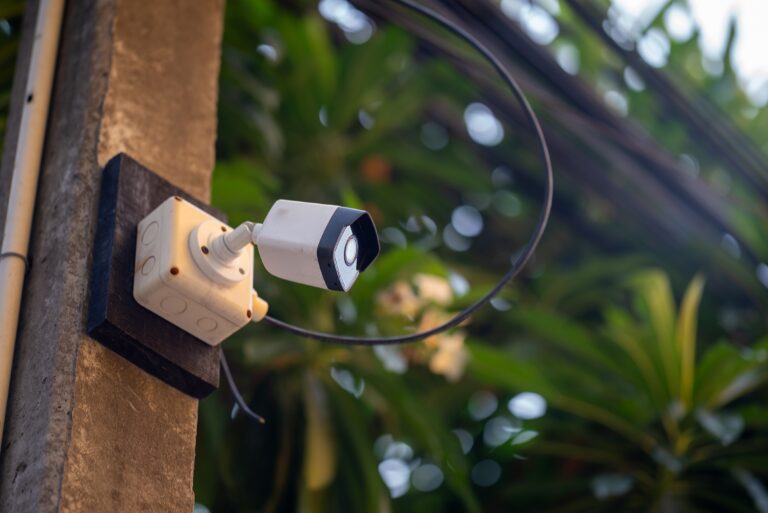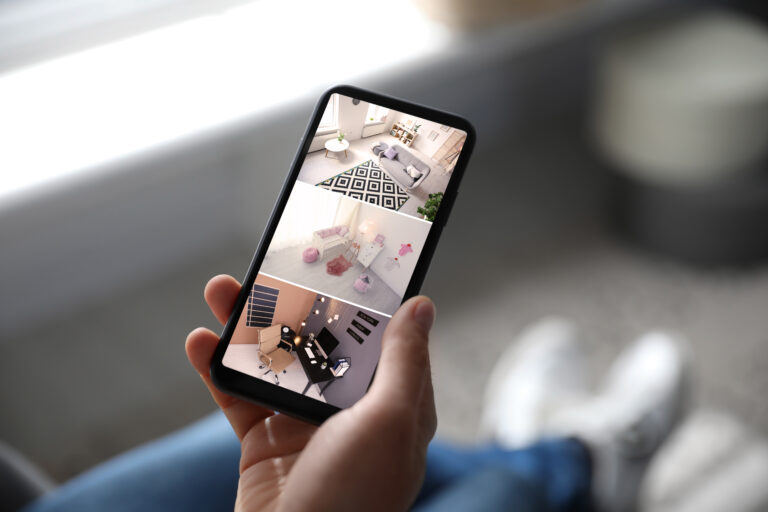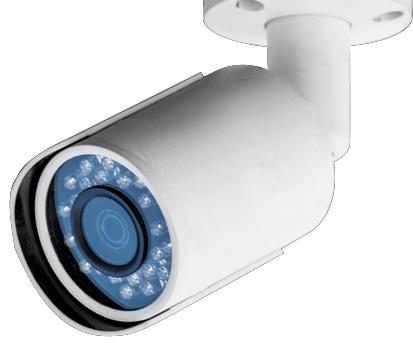- 1) Key Takeaways
- 2) Benefits of Using Security Cameras for Elderly Care Monitoring
- 3) Choosing the Best Camera for Elderly Care
- 4) Types of Elderly Monitors
- 5) Role of a Monitoring System for Elderly Care
- 6) Features to Look for in an Elderly Monitoring Camera
- 7) Building a Video Monitoring System for Elderly in the Home
- 8) Outdoor Security Camera for Elderly Care
- 9) Legal Considerations for Using Security Cameras for Elderly Care
- 10) How to Keep Tabs on Your Elderly Parents with Cameras
- 11) Conclusion
-
12)
FAQs
- 12.1) What are some key features I should look for when choosing a security camera for monitoring my elderly parent?
- 12.2) What are the main benefits of using a sleep sensor for an elderly individual?
- 12.3) Do I need consent from my elderly parent to install security cameras in their home?
- 12.4) What precautions should I take to protect my elderly parent’s privacy when using security cameras?
- 12.5) How can outdoor security cameras help enhance safety for my elderly loved one?
Are you worried about the safety of your elderly loved ones when you can’t be there? There is an increasing trend toward using security cameras for elderly care monitoring. This blog will guide you through benefits, considerations, and effective ways to install and use surveillance devices for seniors’ care.
Let’s explore more on how these systems can help ensure peace of mind and optimal care for older adults.
Key Takeaways
- Security cameras help provide safety to elderly people. They show caregivers what’s happening in real time so they can act fast if there are problems.
- Caregivers can use special features on cameras to watch older adults better. This includes high-quality video, night vision, and movement alerts.
- Cameras not only make sure elderly folks are safe, but they also keep track of their daily activities. This helps spot health issues early on.
- When choosing a security camera for elder care, look for clear picture quality, motion detection and night vision capabilities. Also consider how it will be installed in the home without invading personal privacy.
- There are different types of monitors for elderly individuals: IP cameras which allow live streaming; personal emergency response pendants that call for help; room monitors that observe senior’s activities; sleep sensors which ensure seniors get enough rest by tracking sleep patterns.
Benefits of Using Security Cameras for Elderly Care Monitoring
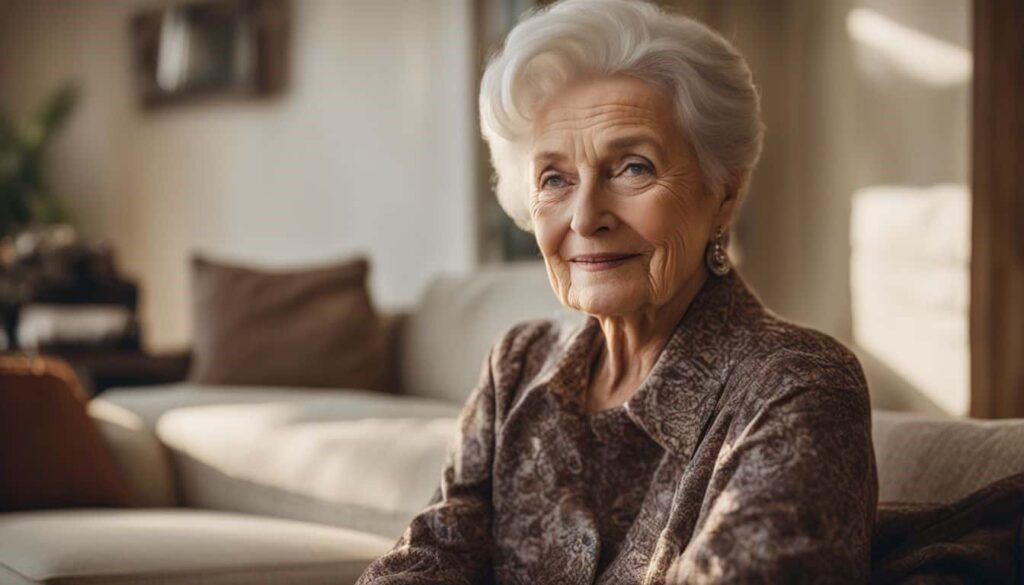
Security cameras provide invaluable benefits in elderly care monitoring such as offering peace of mind to caregivers, guaranteeing the safety and security of the senior individuals, and aiding in keeping a comprehensive track of their daily activities.
Provides peace of mind
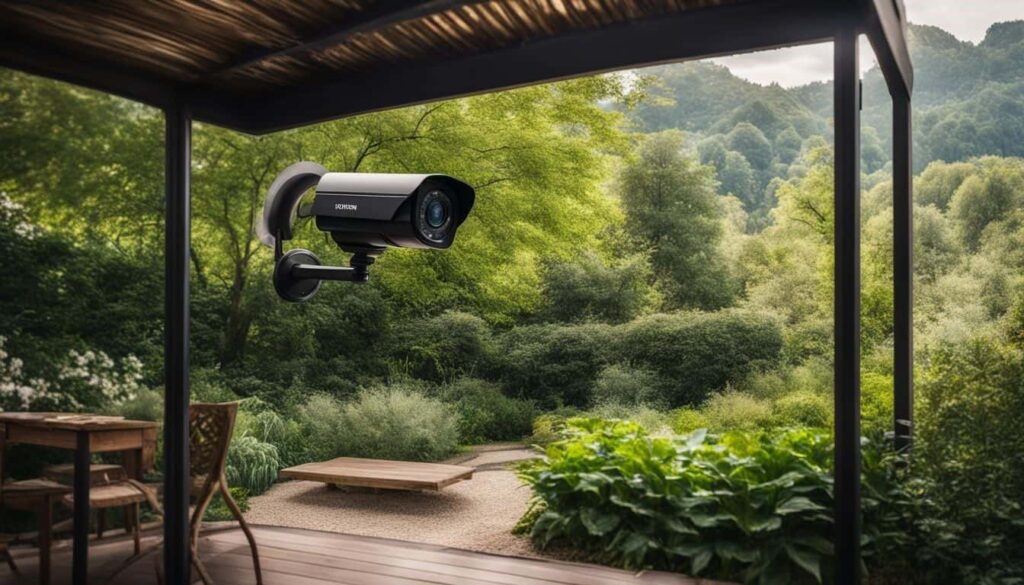
Security cameras in elderly care play a crucial role in offering peace of mind to caregivers and family members. As a key component in home safety systems, these devices provide real-time surveillance, ensuring seniors are safe at all times.
Family members can check on their loved ones remotely, reducing concerns about their well-being when they’re unavailable to physically be there. Business owners can also assure clients that their services prioritize resident safety with these tools for continuous monitoring.
Elderly security cameras significantly alleviate worries, enabling families and caregivers to rest easy knowing that the seniors’ environment is secure and monitored efficiently.
Ensures safety and security
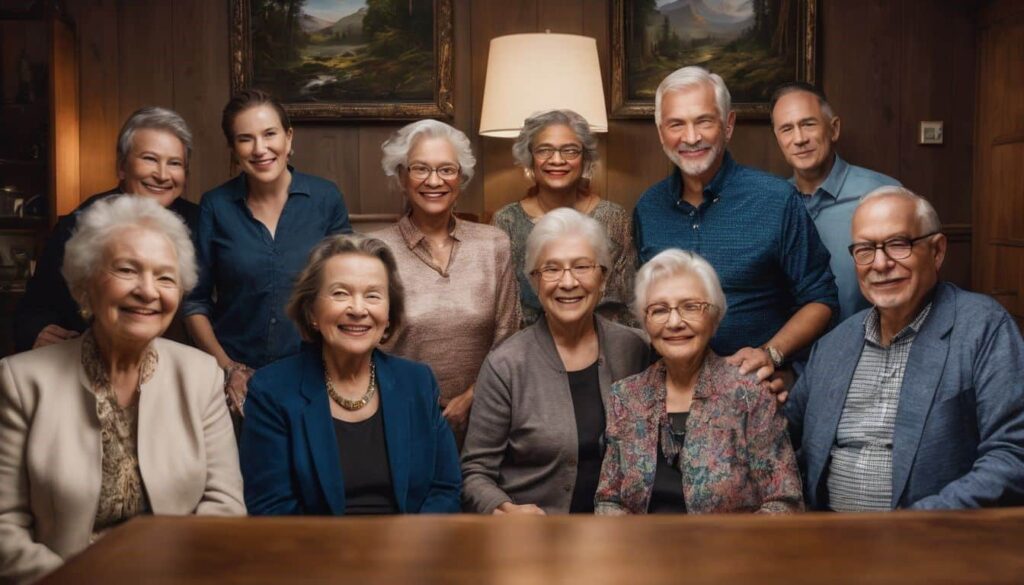
With security cameras in place for elderly care monitoring, you bolster safety and create a secure environment. These devices help detect signs of trouble such as sudden falls or irregular behavior in real-time, allowing immediate response when required.
Surveillance systems also play an essential role in deterring potential intruders, further enhancing the level of security at home. The significance of these devices extends beyond routine monitoring – they serve as eyes on the ground that never blink.
Installing surveillance cameras within seniors’ homes offers peace of mind to family members and caregivers who are not able to be present around the clock. By utilizing technology like two-way video monitors for seniors, it’s possible to check on loved ones remotely at any time.
This kind of convenience is crucial especially considering the busy lives we lead today where continuous physical presence may not always be feasible. Thereby, through effective use of security cameras, ensuring safety becomes seamless and manageable even from afar.
Helps keep track of daily activities

Security cameras for elderly care monitoring play an instrumental role in tracking the daily activities of senior citizens. Whether it’s mealtime, medication schedules, or just routine movement around the home, these devices provide real-time updates to caregivers and family members.
Advanced features on some models can detect irregular patterns which could potentially indicate a health issue. For instance, too much time spent inactive could be a sign of illness or discomfort that needs immediate attention.
Utilizing security cameras for senior care monitoring supports the ongoing assessment of an older adult’s wellbeing and helps identify any changes that may require intervention.
Choosing the Best Camera for Elderly Care
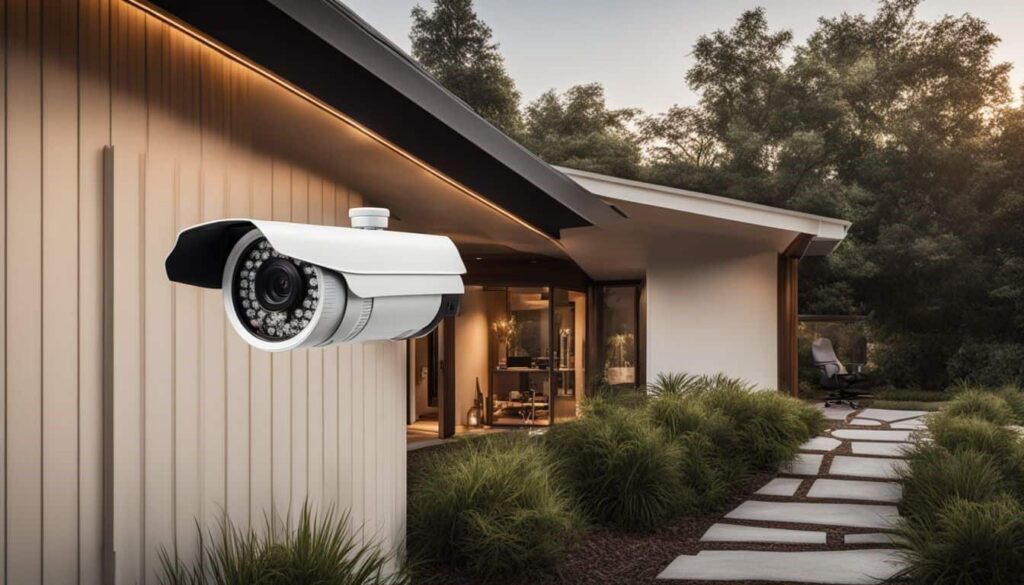
When selecting the best camera for elderly care, one must consider key features such as clear video quality, night vision capabilities, and motion detection; explore both indoor and outdoor monitoring options; and keep in mind considerations for an unobtrusive in-home installation that respects the privacy of the senior.
Features to look for
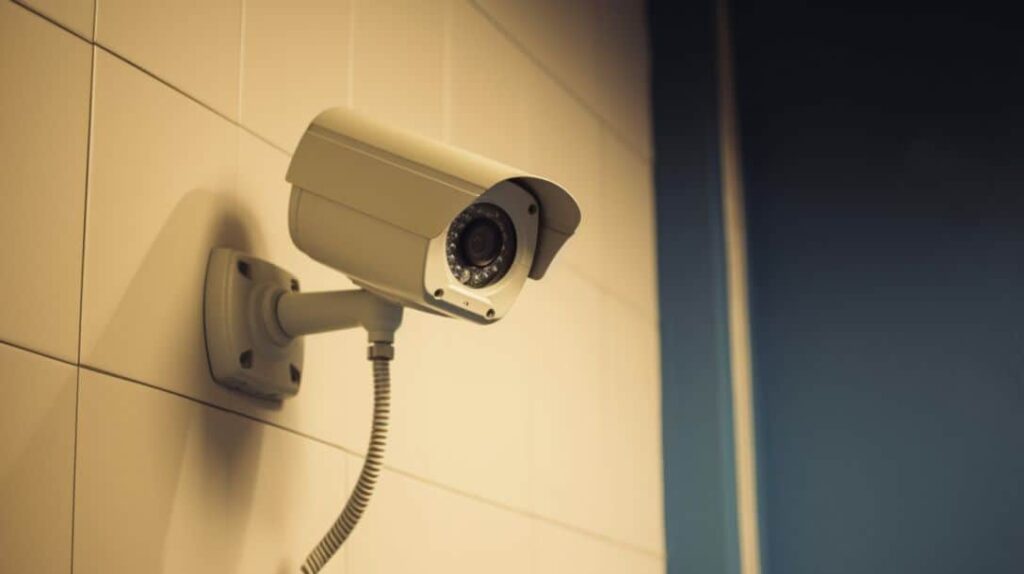
Finding the right camera for elderly monitoring involves careful consideration of a variety of features. Elder care business owners need to know what elements to focus on when selecting a surveillance system.
- High Resolution: A clear, high-definition picture is essential. You want to spot any unusual behavior or accidents immediately.
- Two-Way Communication: Cameras should offer the ability to talk and listen to the elderly person in real time.
- Motion Detection: This feature alerts you whenever there’s any movement in the room being monitored.
- Night Vision: It helps monitor elders especially at night which is critical as many falls happen during this time.
- Easy Installation: Wireless cameras are often preferred because they’re easier and faster to set up compared to wired versions.
- Internet Compatibility: Choose models that work well with smart home technologies, allowing caregivers or family members to watch from anywhere using internet-connected devices.
- User-Friendly Interface: The camera interface must be easy for both caregivers and seniors themselves to use if necessary.
Options for indoor and outdoor monitoring
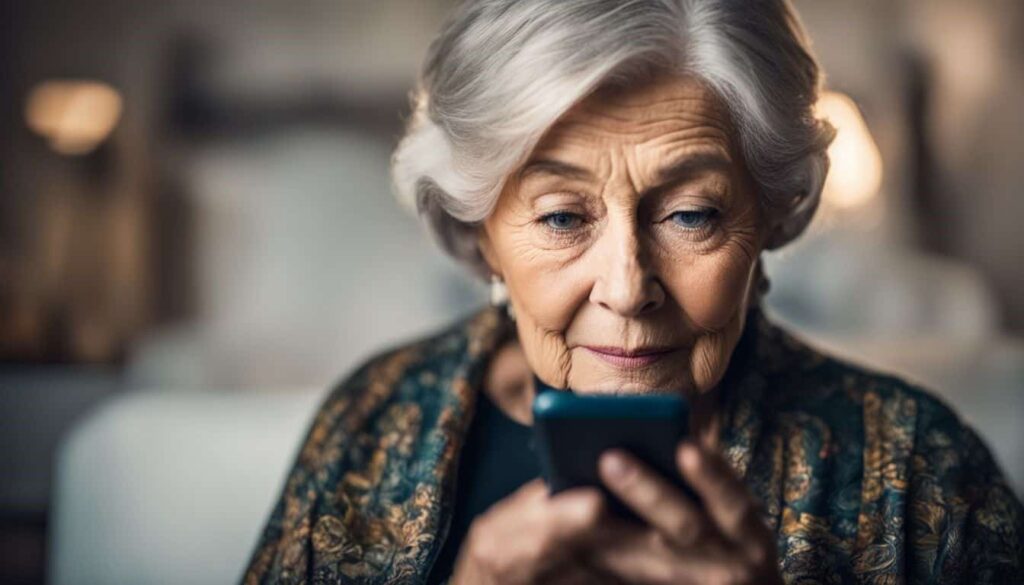
Indoor cameras for senior monitoring offer a focused range of visibility, making them ideal for keeping an eye on specific areas like the living room, bedroom or kitchen. They typically feature motion detection and night vision capabilities which make it possible to monitor elderly loved ones round-the-clock.
Some models also provide two-way communication options allowing caregivers to communicate with their wards without having to be physically present.
On the other hand, outdoor security cameras play an essential role in enhancing the overall safety of seniors. With these devices installed around entrances or backyards, caregivers can spot potential intruders before they reach inside the house.
These models are weather-resistant and often come with advanced features such as wide-angle lenses for greater field view and infrared night vision – ensuring effective surveillance even in low light conditions.
Regardless of your choice between indoor or outdoor systems, consider models that are internet compatible so you can conveniently check live footage from any location via your smartphone or computer.
Considerations for in-home installation
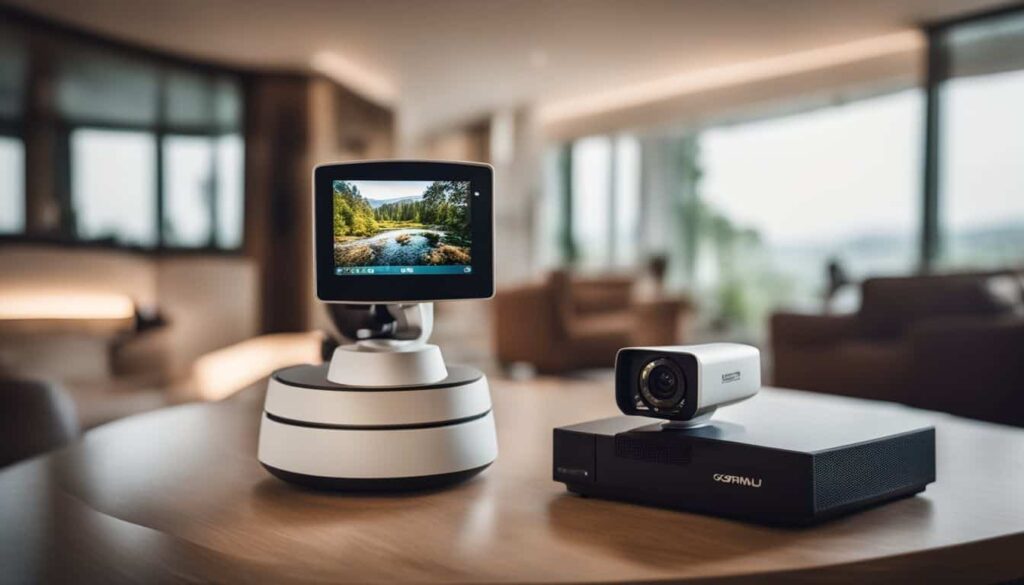
Installing surveillance cameras in an elderly individual’s home requires careful thought and planning. Here is a list of key factors to consider:
- Location and Coverage: Install the cameras in locations that cover the areas your elderly loved ones frequent most, such as the living room, kitchen, and bedroom.
- Easy Accessibility: Ensure that caregivers can easily access the cameras for maintenance or troubleshooting.
- Wi-Fi Connectivity: Check if your chosen camera works efficiently with the home’s internet connection.
- Power Supply: The camera should be installed near a power source, keeping in mind to keep cords out of tripping hazard zones.
- Intrusion Alarm: Consider installing cameras with intrusion alarm systems for added security.
- Weather Resistance: For outdoor surveillance cameras, ensure that they are built sturdy enough to withstand various weather conditions.
- Lighting Conditions: Check whether the specific areas targeted for monitoring have adequate lighting for clear footage; otherwise, go for cameras with night vision capabilities.
- Privacy Concerns: Cameras should not invade personal spaces such as bathrooms and dressing rooms, respecting the privacy of your elderly loved ones.
- Installation Help: Some complex surveillance systems require expert installation help; account for this from the start.
- Legalities and Consent: Prioritize obtaining informed consent from your elderly loved one before installing cameras, ensuring adherence to privacy laws.
Types of Elderly Monitors

Explore the various types of elderly monitors, such as IP cameras for live video feeds, personal emergency response pendants for direct communication during crises, room monitors to oversee activities and sleep sensors to ensure uninterrupted rest.
Discover more about these technologies designed specifically for senior care in our detailed discussion that follows.
IP Cameras
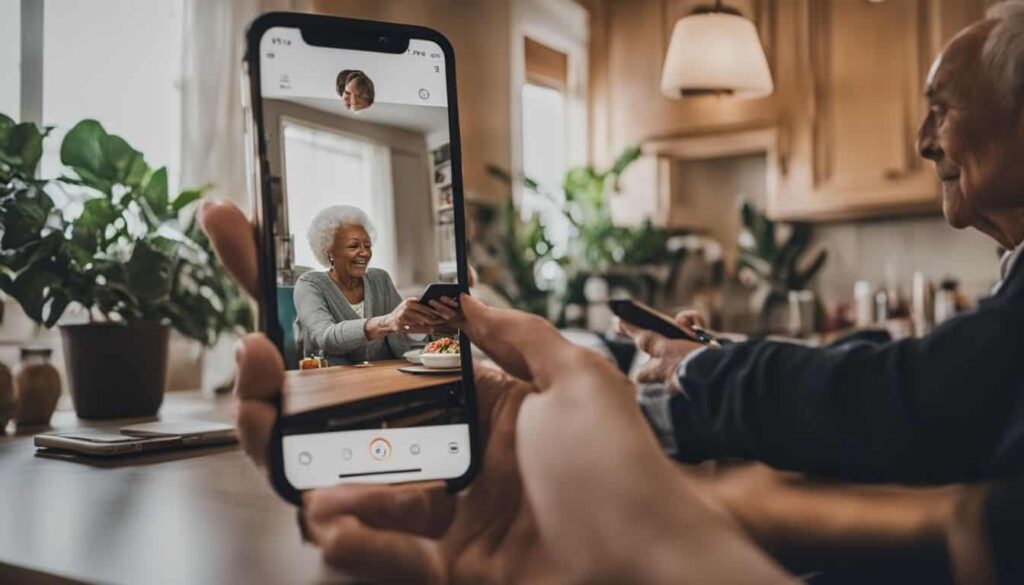
IP cameras play a crucial role in effectively monitoring elderly care. These cutting-edge devices offer superior image quality and remote access abilities, making them ideal for closely observing elderly loved ones or residents from afar.
Owners of elder care businesses will appreciate that IP cameras can connect to the internet, enabling secure live streaming of footage to authorized devices like smartphones or tablets.
This real-time view into an elder’s daily routine provides an immediate alert system for any emergencies or unusual activities. Furthermore, these wireless cameras are simple to install and relocate within homes as needed which adds flexibility and ease of use to their long list of advantages over traditional surveillance systems.
Keep in mind that while selecting the appropriate IP camera model for your needs, prioritize features such as two-way communication, motion detection capabilities, and compatibility with other smart home technology you might already use.
Personal Emergency Response Pendants
Personal Emergency Response Pendants are becoming a popular choice in the realm of elderly care monitoring. These lightweight, wearable devices provide a quick and easy way for seniors to call for help when needed.
They’re typically designed with a user-friendly button that, when pressed, sends an immediate alert to caregivers or emergency services.
The real value lies in their convenience – worn around the neck or wrist, they allow seniors the freedom to move about while still having access to immediate assistance. This promotes independence among older adults who may be at risk of falls or other emergencies.
The pendants also often come with features such as fall detection sensors and GPS location tracking. This technological advancement adds another layer of security and peace of mind for both seniors and their caregivers.
Room Monitors
Room monitors are designed to assist in health and safety surveillance of elderly individuals. They offer real-time information on the resident’s whereabouts, drastically reducing incidences of wandering and lost time searching for seniors.
These devices also provide valuable data about their daily routines, helping tailor care protocols accordingly. Room monitors can detect sudden movements, making them essential for fall prevention – a critical concern in elderly care settings as stated in fact 3 and 6 from important facts section above.
If connected to alert systems or caregiver mobile apps, these monitors can act swiftly during emergencies. A room monitor is not just a camera; it’s an integral part of any comprehensive security system for an elder care facility that aims to maximize safety standards while promoting independent living among its residents.
Sleep Sensors
Sleep sensors play a crucial part in elderly care monitoring by tracking sleep patterns and providing important health data. These sensors, commonly used in smart beds or wearable devices, monitor heart rate and movement throughout the night.
Subtle changes in sleep routine can indicate potential health issues like insomnia or sleep apnea that might otherwise go unnoticed. Alerts sent to caregivers provide immediate response opportunities, especially if an elder leaves their bed during the night – which could lead to falls or injuries.
Advanced versions of these sensors can even track breathing rates and body temperature for comprehensive health insights. Investing in sleep sensors offers added security for seniors who live alone while providing peace of mind to family members and caregivers alike.
Role of a Monitoring System for Elderly Care
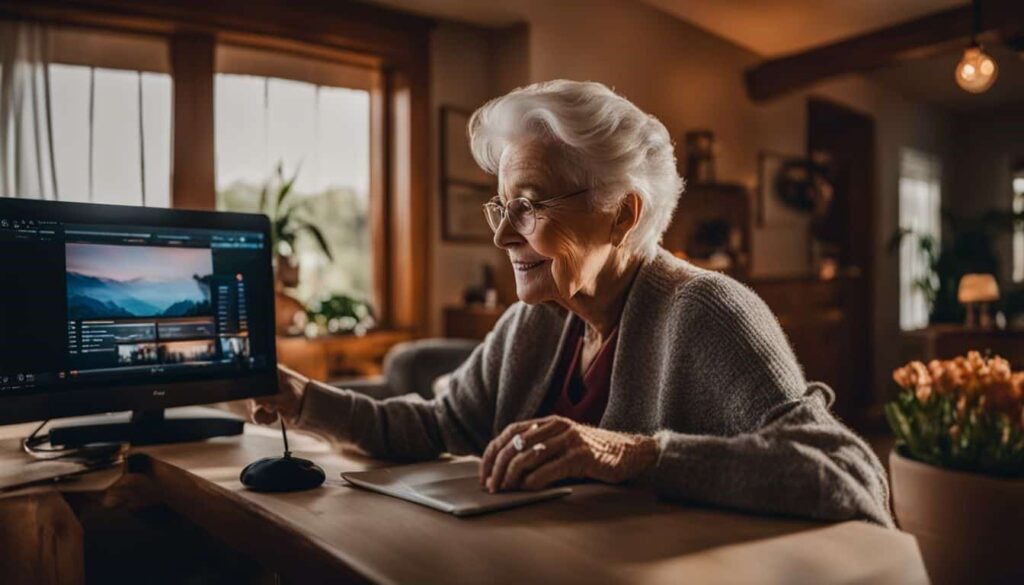
A monitoring system for elderly care plays a crucial role, not only offering companionship to the elderly but also ensuring they take their medication on time, eat balanced meals, and providing instant alerts in case of falls or emergencies.
Providing companionship
Security cameras for elderly care can offer more than just safety monitoring. They play a crucial role in providing companionship to seniors, particularly those living alone or far from their loved ones.
With two-way communication features, caregivers and family members can interact with the older adults throughout the day, reducing feelings of loneliness and isolation.
Surveillance cameras also allow elders to participate remotely in family events they may not otherwise be able to attend due to mobility issues or distance. The ability to share moments together fosters emotional connections between seniors and their families – even when they’re miles apart.
This virtual interaction proves beneficial in enhancing mental well-being among older individuals while making them feel connected and loved.
Monitoring medication and meals
Security cameras play an important role in tracking the daily routines of senior citizens, particularly their medication and meal schedules. Live-streaming feeds can confirm whether prescriptions are taken on time and meals consumed properly.
Advanced IP cameras offer features like motion detection which can alert caregivers when an elderly individual accesses a medicine cabinet or refrigerator, promoting adherence to prescribed regimens.
Furthermore, with two-way communication features, reminders or instructions can be delivered directly through the system addressing issues promptly. This reliable surveillance method provides immediate insights into an elderly person’s well-being without infringing on their freedom or independence.
Detecting falls or emergencies
In the realm of elderly care, security cameras play a pivotal role in spotting falls or emergencies promptly. They can automatically trigger an alert when unusual movement is detected, potentially signaling a fall.
The caregiver or family member receives this alert and can quickly check on the situation through live video feed. This prompt response could be crucial in providing immediate help and minimizing any negative consequences from incidents like falls or medical emergencies.
Some advanced security cameras are also equipped with AI technology that can distinguish between normal activities and situations which may require immediate intervention, taking senior safety to another level.
With these smart detection abilities, caregivers gain enhanced oversight of vulnerable individuals who might not always be able to call for help during emergencies themselves.
Features to Look for in an Elderly Monitoring Camera
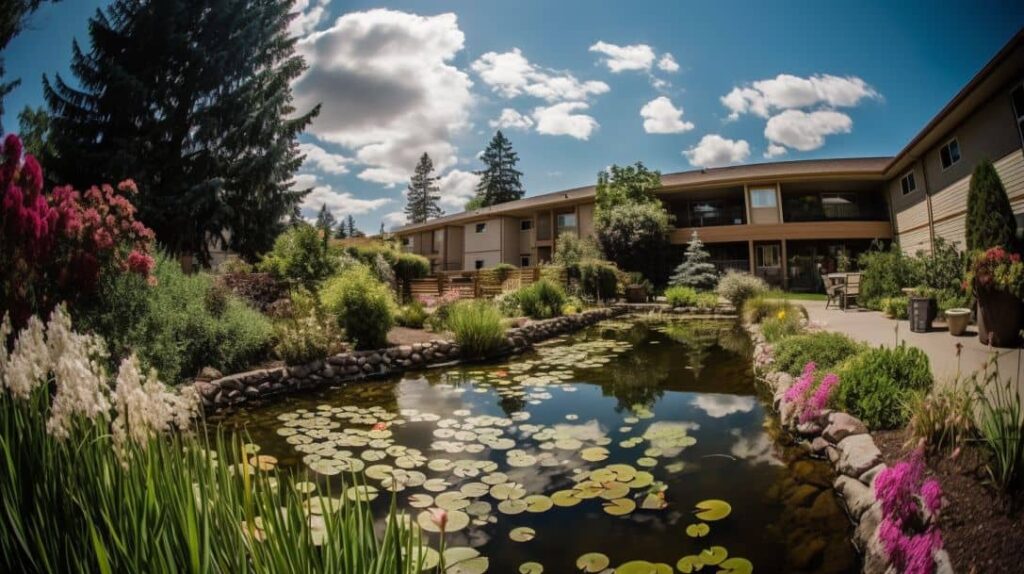
When choosing a monitoring camera for elderly care, key features such as two-way communication, motion detection, push notifications and internet compatibility not only enhance safety but also ensure user-friendliness.
Dive in to understand these critical components better and find the perfect fit for your loved one’s requirements.
Two-way communication
Two-way communication is a crucial feature in many security cameras used for elderly care monitoring. By enabling this, caregivers are not just passively watching footage but can also interact with their loved ones when necessary.
If an elderly individual appears confused or faces danger, the caregiver can step in to give guidance and support through live communication features of the camera. Beyond crisis intervention, these cameras foster companionship by allowing casual chats that help mitigate feelings of isolation often experienced by seniors living alone.
The high-tech design of security cameras today goes beyond just providing visual feedback; they enable real-time audio engagement as well. This hands-on approach enhances caregiving quality while offering peace of mind to those concerned about their elder’s wellbeing without being physically present all the time.
Cameras equipped with two-way communication are particularly useful for individuals at risk of falls or unpredictable behavior, where instant interaction could potentially defuse dangerous situations promptly.
Push notifications
Push notifications serve as crucial alerts in an elderly care monitoring system. This feature sends instant messages to caregivers or family members whenever the camera detects any unusual activity or emergency situations such as falls, injuries or break-ins.
They can be instantly viewed on smartphones, tablets, laptops and other compatible devices via an app connected to the security camera. This ensures immediate action can be taken to ensure the safety and wellbeing of your elderly loved ones.
As a business owner providing elder care services, integrating push notifications into your surveillance systems not only enhances the quality of care but also builds trust with your clients by assuring them that their loved ones are closely monitored and cared for round the clock.
Motion detection
Motion detection is a crucial feature in security cameras used for elderly care. This advanced technology triggers alerts when any movement happens within the camera’s field of view.
For example, if an elderly person gets up in the middle of the night or wanders from their usual areas, caregivers receive instant notifications. If there’s no activity for extended periods, it could signify a problem and warrant immediate attention.
Therefore, motion detection ensures real-time surveillance and improved safety for older adults living alone or those prone to falls and accidents. The technology also reduces false alarms by distinguishing between significant movements like humans walking and minor ones such as curtains fluttering with wind blow, making it an efficient monitoring tool that provides peace of mind to concerned relatives or caregivers.
Internet compatibility
Internet compatibility is a must-have feature in an elderly monitoring camera. The advantage of internet-enabled cameras lies in their capacity to provide real-time surveillance from anywhere at any time.
Using these smart devices, caregivers can receive instant notifications on unusual activities or emergencies. Moreover, wireless security cameras that are compatible with the internet offer flexibility and ease of installation around the house for comprehensive coverage.
They not only keep you connected but also empower you to respond immediately if your loved ones need help.
Ease of use
Security cameras for elderly care should be user-friendly. It’s essential that caregivers and family members can operate them without any complexities. Modern designs prioritize simplicity, allowing users to access features with the touch of a button.
The best security camera systems have intuitive interfaces, making it effortless for even non-tech-savvy individuals to navigate.
Elderly care business owners will appreciate this feature as it saves time on training staff. They can start monitoring their residents promptly after installation without grappling with complex operations.
Wireless cameras further enhance this ease of use by eliminating cumbersome wiring procedures and offering flexible installation options.
Building a Video Monitoring System for Elderly in the Home
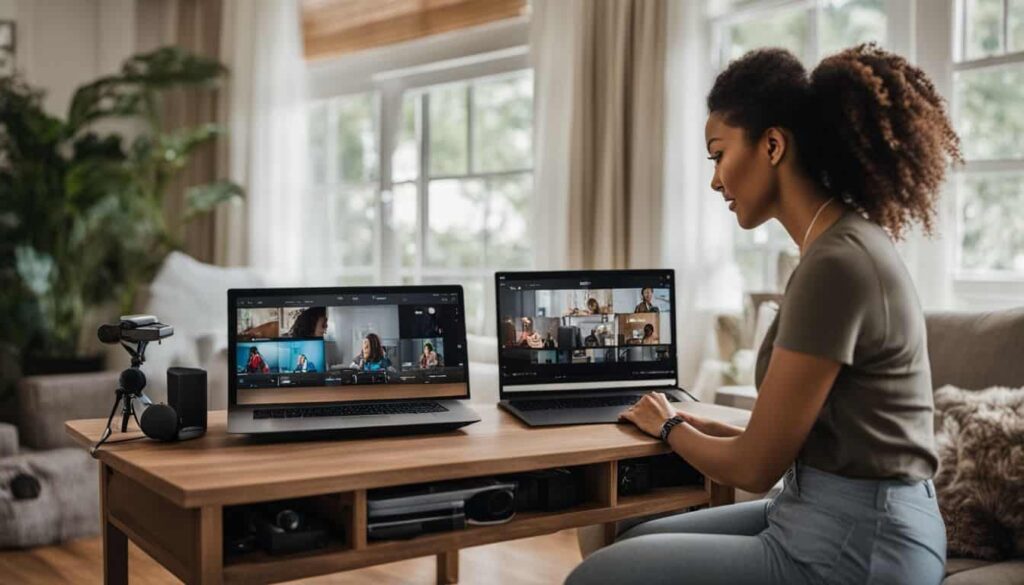
Creating a video monitoring system for the elderly at home requires careful selection of essential equipment, devising a comprehensive monitoring plan, and imparting proper training to caregivers.
Discover more about developing an effective surveillance setup in our detailed guide.
Necessary equipment
Investing in quality equipment is pivotal for building a reliable video monitoring system for elderly care. You need security cameras featuring clear images, good night vision, motion detection and two-way communication to effectively monitor the senior’s daily activities.
A stable internet connection is also crucial as most advanced security cameras operate on Wi-Fi to allow remote viewing from any location. Additionally, diverse mounting options like magnetic mounts or suction cups can facilitate flexible camera placement tailored to the monitored individual’s routine and needs.
For added safety, consider integrating personal emergency response pendants that trigger instant alerts in case of falls or sudden health issues.
Setting up a monitoring plan
Determining the perfect monitoring schedule is crucial when using security cameras for elderly care. This process starts with identifying the high-risk periods and activities for your elderly loved one throughout the day.
For example, meal times or medications administration may require more vigilance. Therefore, you may choose to set up notifications during these times or review footage shortly after these periods.
A well-structured plan also includes familiarizing all caregivers with camera operation and reviewing protocols regularly to ensure it aligns with changing needs of monitored individuals.
Remember, a comprehensive monitoring plan allows effective use of surveillance technology while minimizing invasion of privacy.
Training for caregivers
Training caregivers is a vital step in utilizing security cameras for elderly care. This involves educating the team on how to operate and monitor the camera systems effectively. Caregivers need to be familiar with various features such as motion detection, two-way communication, push notifications, and internet compatibility.
Proper training enhances the ability of caregivers to respond promptly in emergencies. This could include situations like an unexpected fall or sudden health crisis noticed through surveillance feed.
Moreover, understanding these technologies equips caregivers with knowledge on suitable camera placement for optimal monitoring and data protection measures to ensure privacy rights are not infringed upon.
Outdoor Security Camera for Elderly Care
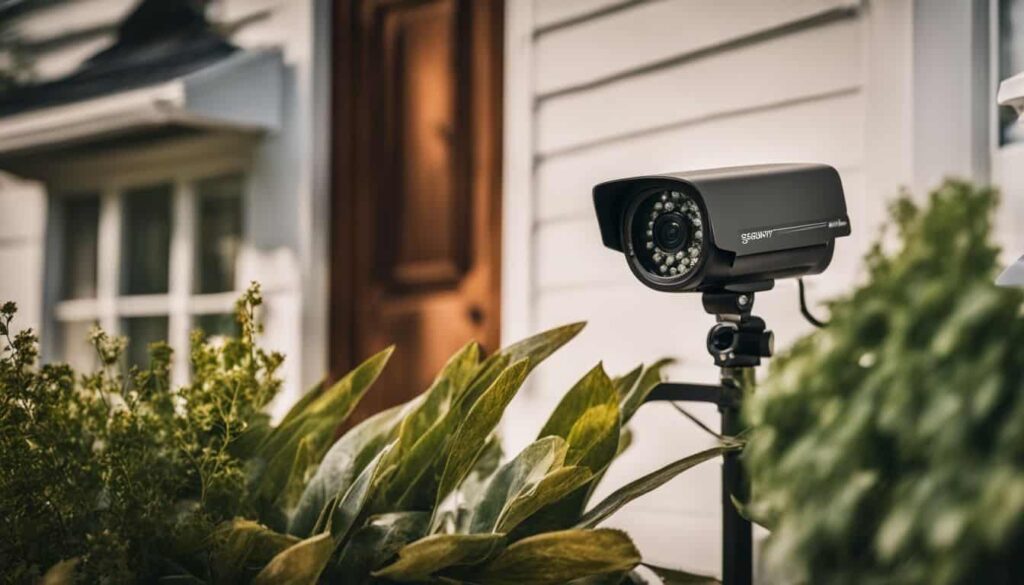
Outdoor security cameras can play a pivotal role in elderly care, providing non-invasive monitoring that ensures the safety of seniors while respecting their independence; this section will discuss pros and cons, as well as key features to consider when choosing outdoor surveillance solutions for elderly care.
Pros and cons
When deciding on whether to implement outdoor security cameras for elderly care, it’s crucial to weigh the pros and cons.
| Pros | Cons |
| Enhances security by deterring outside intruders from entering the property. | Installation and maintenance might require additional costs. |
| Allows caregivers to monitor the outdoor activities of the elderly, providing insights into their physical activities and potential safety risks. | Wireless cameras might face connectivity issues, impacting the quality of surveillance. |
| Outdoor cameras with motion detection offer real-time alerts for unusual activities. | May raise privacy concerns if not positioned or used carefully. |
| Can be accessed remotely by caregivers or family members, offering them peace of mind. | Weather conditions may impact camera functionality and durability. |
| Smart home technology integration allows surveillance from any location. | Needs elderly individuals’ consent to ensure ethical use. |
It’s important to note that each case is unique, and the pros and cons might vary depending on specific situations and requirements. Therefore, understanding these factors will guide Elder Care Business Owners in making an informed decision.
Important features to consider
Establishing the right monitoring system for elderly care requires a keen eye for key features. Here are some essential ones to ponder:
- Prioritize ease of use: The caregivers should navigate through the system without confusion or difficulty, making user-friendly interfaces crucial.
- Ensure reliability: The surveillance camera must offer consistent performance and minimal downtime to guarantee continuous monitoring.
- Consider specific needs: Different seniors require varied levels of care, so customize a system that suits their individual needs best.
- Opt for wireless cameras: They provide flexibility and effortless installation, making them ideal choices for most setups.
- Incorporate smart home technology: This tech integrates with surveillance cameras allowing caregivers or family members to monitor seniors remotely from anywhere.
- Focus on the security aspect: Surveillance cameras, apart from monitoring internal activities, should also protect homes from outside intruders.
Legal Considerations for Using Security Cameras for Elderly Care
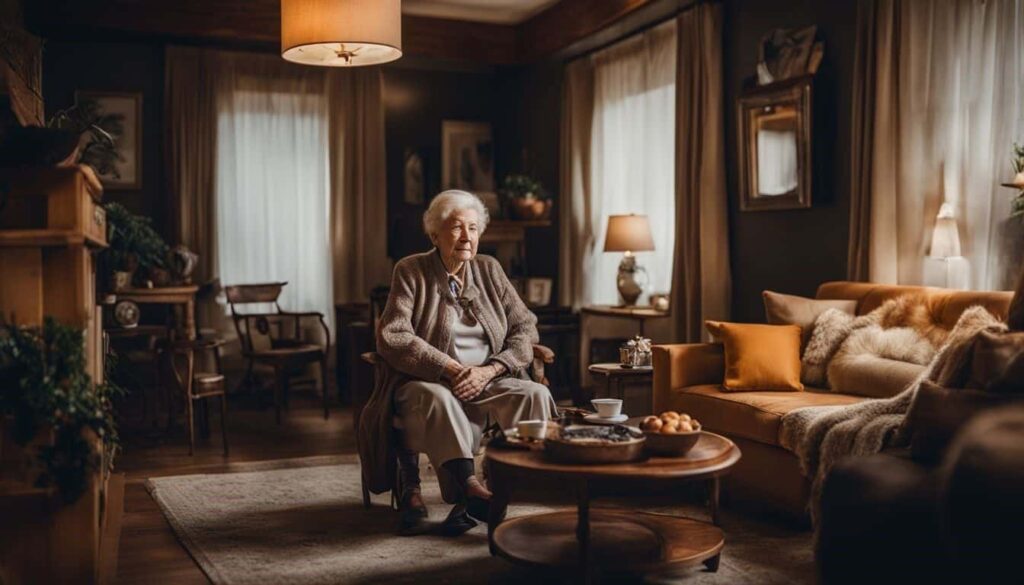
Understanding and complying with applicable privacy laws is crucial when implementing security cameras for elderly care. It’s essential to acquire consent from the elderly individual being monitored, respecting their rights to privacy and dignity.
Moreover, specific rules govern surveillance in nursing homes that one must adhere to, thus ensuring ethical use of these devices while fulfilling their intended function of promoting safety and well-being among our senior population.
Privacy laws
Privacy laws play a critical role in the use of security cameras for elderly care. These laws ensure that the personal privacy of elderly individuals is respected and protected. In many regions, explicit consent from the individual being monitored is needed before you can install surveillance devices.
It’s essential to check local regulations and comply with all legal requirements when installing cameras in a senior’s living space or a nursing home facility. Failure to respect these legal guidelines could result in penalties or legal trouble, putting your business at risk.
Consent from the elderly individual
Obtaining the consent of the elderly individual is a critical part of using security cameras for monitoring. This step protects their rights and establishes trust in the caregiving process.
The use of surveillance technology can be interpreted as invasive or supportive, depending on personal perspectives. Gaining approval ensures that your decision respects their autonomy and privacy, while still prioritizing their safety.
Discuss with them about the intention to install cameras in specific parts of the house where they spend most time and explain how it aids in ensuring their safety at home. Transparency is key here—it allows them to feel comfortable knowing what’s going on, rather than overshadowed by constant surveillance.
Regulations for nursing homes
Nursing homes must adhere to strict regulations when implementing security cameras for elderly care. These rules are in place to protect the privacy and dignity of residents, while ensuring their safety is prioritized.
Under these guidelines, consent should be obtained from either the resident themselves or a designated representative before installing a camera in any private space. In some states, audio recording might not be permitted without express agreement from all parties involved.
It’s essential that nursing homes stay updated on surveillance laws specific to their state and follow them diligently. Non-compliance can lead to harsh penalties including hefty fines and license revocations.
Therefore, understanding these regulations is crucial before integrating any form of video monitoring system.
How to Keep Tabs on Your Elderly Parents with Cameras
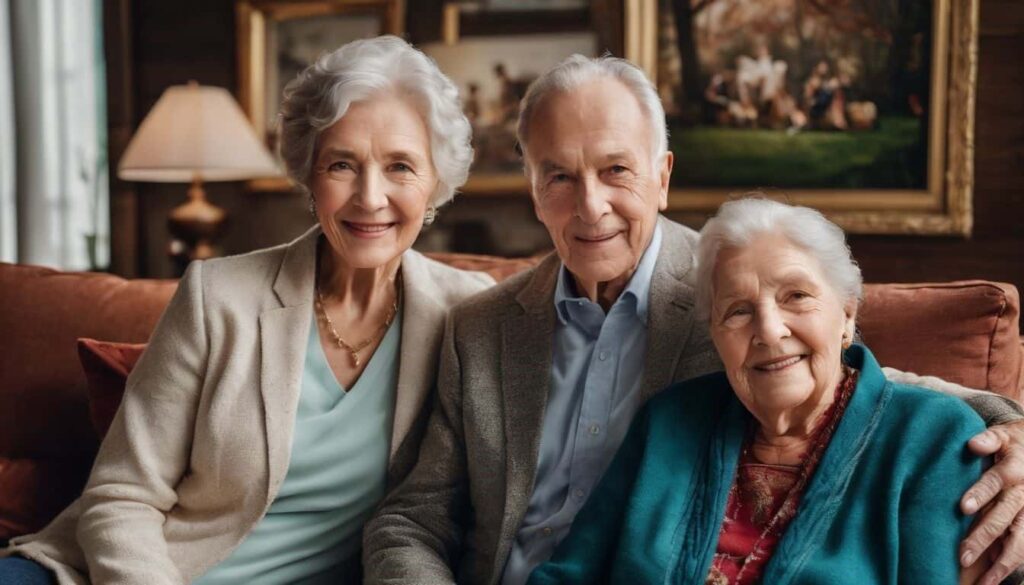
Using security cameras can be a responsible way to monitor your elderly parents, providing you engage in open conversations about privacy and safety with them, effectively strike the delicate balance between their autonomy and well-being, and utilize the technology ethically for their care.
Tips for using surveillance responsibly
Starting surveillance for elderly care requires careful planning and responsible usage. Here are some tips to make the most of security cameras while respecting individual’s privacy:
- Obtain explicit consent from the elderly individual before placing cameras, acknowledging their right to privacy.
- Position cameras only in common areas like living rooms or kitchens, avoiding personal spaces like bedrooms or bathrooms.
- Make sure all caregivers and family members are aware of the surveillance and its purpose to avoid misconceptions.
- Use wireless cameras for flexible installation and easy repositioning based on need and comfort.
- Choose a camera with two – way communication feature to maintain regular contact with the senior.
- Don’t record audio unless necessary as it may infringe upon an individual’s privacy rights under certain laws.
- Ensure that the video feeds are secure to prevent unauthorized access or hacking attempts.
- Regularly check camera functionality and promptly fix any technical issues to ensure continuous monitoring.
- Involve professionals when setting up surveillance systems for optimal coverage and seamless function.
- Use motion detectors or push notification features to stay updated about any unusual activity without constant monitoring.
Trust and communication with the elderly individual
Building a trusting relationship and maintaining open communication with the elderly individual is crucial in using security cameras for care monitoring. They need to understand how these devices operate, their purpose, and benefits to them.
This understanding encourages acceptance and cooperation from the senior and prevents feelings of distrust or invasion of privacy. Conversations about camera placements should be straightforward, reassuring them about respect for their personal spaces like bedrooms or bathrooms where cameras won’t be installed.
Involve them in decision-making processes; it’s not just about monitoring but also empowering them with knowledge about their safety. As such, combining trust-building measures with effective communication leads to a comfortable environment that supports an effective use of surveillance technology for elder care.
Finding the right balance between privacy and safety
Striking the right balance between privacy and safety in elderly care poses a challenging task. Elderly individuals have a right to privacy, just like any other person, yet their risk factor for accidents or health emergencies often necessitates the use of surveillance cameras.
It’s crucial that caregivers inform seniors about camera installation and its purposes: ensuring their well-being while respecting their autonomy. Regular communication helps build trust with your elderly loved ones, alleviating fears or discomfort associated with being monitored.
Furthermore, maintaining transparency can help alleviate legal issues that may arise over consent and privacy laws. As such, achieving this delicate equilibrium requires thoughtful planning, open dialogue and adherence to strict ethical standards.
Conclusion

Security cameras bridge the gap between personal care and technological advancement in elderly care monitoring. They are tools that provide safety, peace, and assurance for both caregivers and their loved ones.
The continuous innovation of these devices reinforces a future where quality aged-care is accessible to everyone. It validates how technology plays an essential role in promoting dignified aging through proper supervision and immediate response during emergencies.
For elderly care facilities looking to enhance safety and security through professional video surveillance systems, Jefferson Security Cameras offers comprehensive security camera installation services. Our team of experts can conduct site evaluations to determine optimal camera placements, install high-quality commercial-grade cameras tailored to your facility’s needs, and provide ongoing maintenance.
Jefferson Security Cameras understands the unique requirements of securing vulnerable senior populations. Their solutions prioritize clear image capture, wireless flexibility, remote monitoring access for authorized caregivers, and integration with other smart technologies. This allows for round-the-clock oversight to protect the wellbeing of elderly individuals.
Elderly care facilities interested in a free quote for new video surveillance systems can contact Jefferson Security Cameras Online or call (267) 662-1457. Jefferson Security Cameras is an ideal partner for implementing responsible and effective security camera solutions to enhance safety for elderly residents and provide peace of mind to their caregivers.
FAQs
What are some key features I should look for when choosing a security camera for monitoring my elderly parent?
When selecting a security camera for elderly monitoring, prioritize features like high-definition video for clear images, motion sensors to detect movement and alert you, and two-way audio so you can talk to your loved one. Also consider ease of use, wireless connectivity, and integration with other smart home devices.
What are the main benefits of using a sleep sensor for an elderly individual?
Sleep sensors provide valuable insights by tracking sleep patterns, heart rate, breathing, and motion. This data can help identify conditions like sleep apnea early. Alerts to caregivers for irregularities can also prevent falls if the senior gets up unattended. Overall, sleep sensors promote safety and optimal rest.
Do I need consent from my elderly parent to install security cameras in their home?
Yes, consent is legally required in most regions before installing surveillance devices in a senior’s private residence. Have an open discussion about it, highlight the safety benefits, and get their approval first. This shows respect, builds trust, and ensures you comply with privacy laws.
What precautions should I take to protect my elderly parent’s privacy when using security cameras?
Avoid recording private spaces like bedrooms and bathrooms. Use motion alerts rather than continuous monitoring. Inform them about camera placement and usage. Store footage securely, and limit access only to authorized caregivers. Prioritize building trust through transparency regarding surveillance.
How can outdoor security cameras help enhance safety for my elderly loved one?
Outdoor cameras provide perimeter monitoring, alerting you to any unusual activity from strangers approaching the house. Features like motion sensor spotlights can also deter potential intruders. Checking the feed remotely offers peace of mind that your loved one is protected when you can’t be there.
